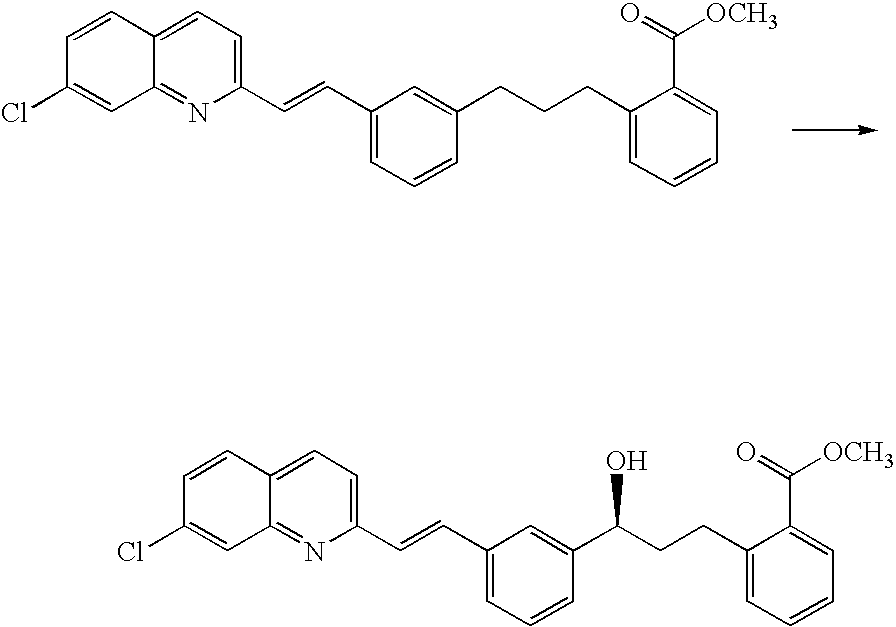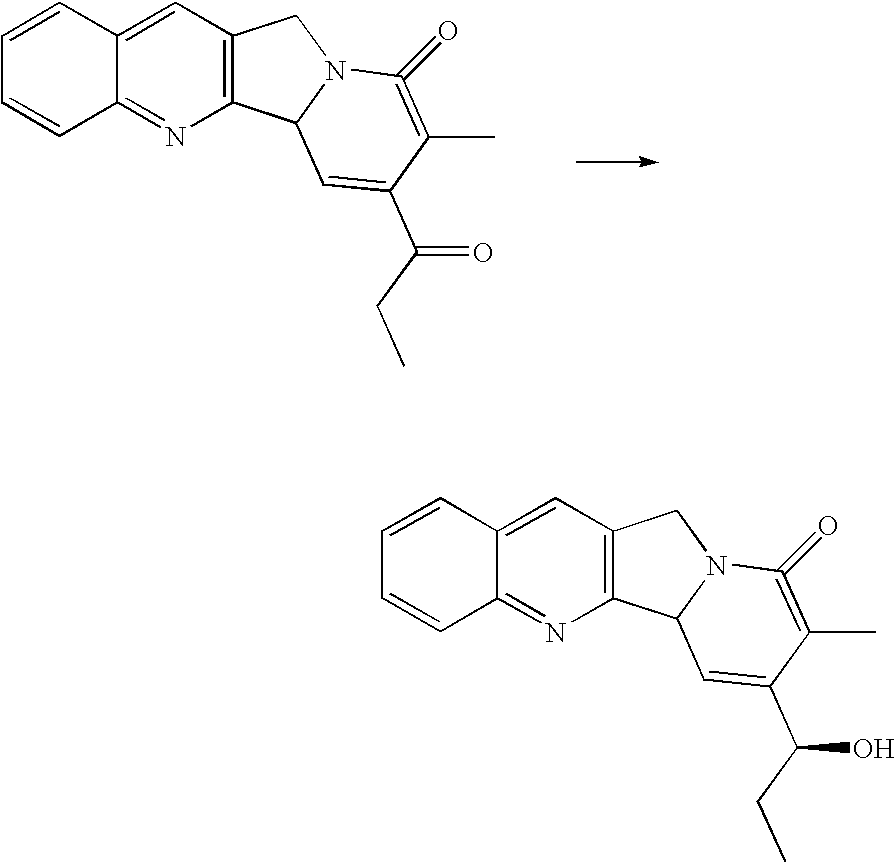Carbonyl reductase, gene encoding the same, and process for producing optically active alcohols using the same
a technology of carbonyl reductase and gene encoding, which is applied in the direction of peptides, plant/algae/fungi/lichens ingredients, enzymology, etc., to achieve cost-effective production
- Summary
- Abstract
- Description
- Claims
- Application Information
AI Technical Summary
Benefits of technology
Problems solved by technology
Method used
Image
Examples
production example 1
Synthesis of (E)-7-[2-cyclopropyl-4-(4-fluorophenyl)-quinolin-3-yl]-3,5-dioxohept-6-enoic acid ethyl ester (hereinafter, abbreviated as DOXE)
[0141]In a 500-ml four-neck flask equipped with a stirrer, a dropping funnel, and a thermo-meter, 5.02 g (11.22 mmol) of (E)-7-[2-cyclopropyl-4-(4-fluorophenyl)-quinolin-3-yl]-5-hydroxy-3-oxohept-6-enoic acid ethyl ester (hereinafter, abbreviated as 5-MOLE) and 420 mL of acetone were added and stirred. Then, 10.5 mL of a prepared Jones oxidizing agent (i.e., a reagent obtained by mixing 3 mL of a concentrated sulfuric acid and 3.35 g of chromium oxide together, followed by diluting up to 25 mL with water) was dropped at 0° C. in 20 minutes, and was then stirred under ice cooling for 2 hours, followed by gradually adding 10 mL of methanol to terminate the reaction. Subsequently, a reaction mixture solution was placed at reduced pressure to allow acetone to be distilled off, followed by the addition of 250 mL of ethyl acetate. The resulting solut...
production example 2
Synthesis of 5S-(E)-7-[2-cyclopropyl-4-(4-fluorophenyl)-quinolin-3-yl]-5-hydroxy-3-oxo-hept-6-enoic acid ethyl ester (hereinafter, abbreviated as 5S-MOLE)
[0143]In a Schlenk tube introduced with nitrogen gas after being heated and dried at a reduced pressure, 0.87 g (3.3 mmol) of (S)-2-[N-(3-methyl-5-tert-butyl salicylidene) amino]-3-methyl-1-butanol, 5 ml of methylene chloride, and 0.63 ml (6.0 mmol) of titanium tetraethoxide were added, and stirred and mixed at room temperature for 1 hour. After cooling the Schlenk tube down to −50° C., 0.95 g (3.0 mmol) of (E)-3-[2-cyclopropyl-4-(4-fluorophenyl)-quinolin-3-yl]-prop-2-en-1-al dissolved in 2 ml of methylene chloride was dropped. After stirring the resultant for 5 minutes, 0.51 g (6 mmol) of diketene was further added, and stirred for 22 hours while keeping the temperature at −50° C. for the reaction. The resulting reaction mixture solution was added in a mixture solution of 25 ml of methylene chloride and 25 ml of a 0.24M sodium bic...
example 1
Isolation of Carbonyl Reductase
[0144]Ogataea minuta var. nonfermentans IFO 1473 strain was cultivated in 20 liters of YM medium (24 g glucose, 3 g yeast extract, 3 g malt extract, 5 g / l peptone, pH 6.0) and bacterial cells were prepared by centrifugation. 300 gout of the obtained wet bacterial cells were suspended in 50 mM potassium phosphate buffer (pH 7.0, 1 mM DTT) and disrupted in Dyno-Mill (manufactured by Dyno-Mill). Thereafter, the bacterial cell residue was removed by centrifugation to obtain a cell-free extract. 12-w / v % Polyethylene glycol (PEG) 6000 was added to the cell-free extract and the resultant was centrifuged to obtain a supernatant. The supernatant was added to DEAE-Sepharose 6FF (2.6 cm×28 cm) equilibrated with a standard buffer (10 mM potassium phosphate buffer (pH7.0), 1 nMDTT). After a column was washed with the standard buffer, it was further washed with a standard buffer that contains 0.07 M sodium chloride and then gradient elution with 0.07 to 0.18 M sodi...
PUM
| Property | Measurement | Unit |
|---|---|---|
| Temperature | aaaaa | aaaaa |
| Optical activity | aaaaa | aaaaa |
Abstract
Description
Claims
Application Information
 Login to View More
Login to View More - R&D
- Intellectual Property
- Life Sciences
- Materials
- Tech Scout
- Unparalleled Data Quality
- Higher Quality Content
- 60% Fewer Hallucinations
Browse by: Latest US Patents, China's latest patents, Technical Efficacy Thesaurus, Application Domain, Technology Topic, Popular Technical Reports.
© 2025 PatSnap. All rights reserved.Legal|Privacy policy|Modern Slavery Act Transparency Statement|Sitemap|About US| Contact US: help@patsnap.com



